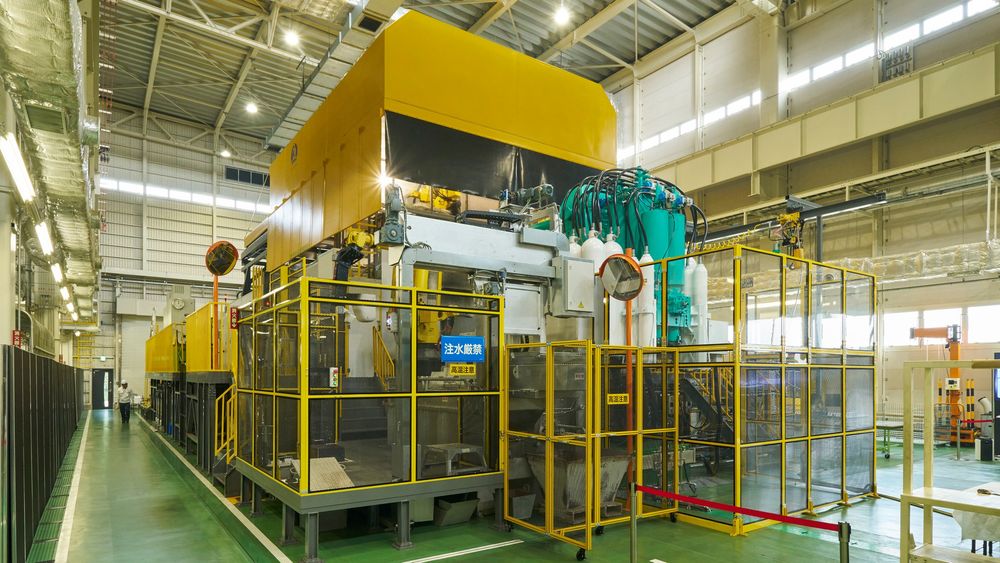Transforming Electric Vehicle Manufacturing at Honda
Gigapresses are gaining popularity among automakers aiming to reduce costs and complexity by replacing numerous parts with a single massive component. Tesla has made headlines with its competitive advantages in this area. Major companies, including Volvo, Toyota, Hyundai, Ford, and Nissan, are either using or exploring these high-pressure casting machines, which exert up to 10,000 tons of pressure to create large parts.
Honda is embracing a unique approach by choosing to implement the slightly smaller megapress, which utilizes 6,000 tons of pressure to manufacture components. This represents the largest machine Honda has ever integrated into its production lines. Testing is currently underway at the Tochigi plant in Japan, producing battery covers for the upcoming 0 Series family of electric vehicles set for launch in 2026.
Innovative Manufacturing at Honda’s Ohio Plant
The manufacturing complex in Marysville, Ohio, is set to feature six new megapresses as part of Honda’s transformation into an EV Hub dedicated to producing electric vehicles and their respective batteries. The first model rolling off the line will be a compact sedan based on the Saloon concept showcased at CES in January. While gigacasting technology can streamline the production by reducing hundreds of parts into a subassembly, megacasting allows Honda to construct larger sections with only two parts. This approach results in a significant cost reduction of approximately 40% when factoring the machinery, tooling, and cycle time.
Benefits of Megacasting Technology
The installation of six megapresses at Honda’s facility in Ohio allows the company to simplify the structure of the aluminum die-cast battery cover, reducing the part count from over 60 to just five. The implementation of 3D friction stir welding ensures high-quality joints capable of uniting materials of varied thicknesses, resulting in enhanced production efficiency with less heat and deformation compared to traditional arc welding. The fusion of megacasting and stir welding yields a lighter, 6% thinner case that facilitates improved space utilization for batteries in vehicles designed with low floors offering ample cabin room and a range of approximately 300 miles. Additionally, Honda has created a thermal management system to enhance energy efficiency, aiming to limit range degradation to under 10% after a decade of use.
Honda’s battery production will shift to a new joint-venture facility with LG Energy Solution in Marysville, anticipated to be operational by year-end. This facility will feature a flex-cell layout and an advanced automated process to adapt production volume according to demand for medium or large battery cases.
Future of Manufacturing in Marysville
Honda is enhancing the assembly plant in Marysville to accommodate the production of internal combustion engines, hybrids, and battery electric vehicles on the same line. Scheduled to commence in late 2025, it will begin manufacturing an Acura EV, based on the Acura Performance EV concept, supported by a new architecture. This flexible assembly line will operate parallel to the existing one, which currently produces the Acura Integra, TLX, Honda Accord, and Accord Hybrid.
In leveraging new CDC (Constant Direct Current Chopping) joining technology for spot welding the vehicle body frame, Honda is becoming a pioneer in this approach. The adoption of CDC technology enhances the frame’s rigidity through the use of lightweight materials, allowing for construction of thicker welds with minimal spatter. The CDC welding gun can also be integrated with current robotic systems, with plans for its utilization in 0 Series vehicles and further rollout across Honda’s future offerings, regardless of the powertrain type.
Next-Generation EVs Under Development in Canada
Looking ahead, Honda is establishing a manufacturing complex in Alliston, Ontario, which will include a new electric vehicle assembly facility with an annual capacity of 240,000 next-generation EVs starting in 2028. In conjunction with this, a battery plant will manufacture lithium-ion batteries initially but will transition to solid-state battery production as that technology matures. The megacast die-casting capabilities will be expanded to include aluminum body parts, such as rear modules tailored for these future electric vehicles.
Overall, Honda’s strategic investments and new manufacturing technologies are set to optimize production efficiencies and introduce revolutionary electric vehicles that lead the market. Therefore, the company is well-positioned to meet the demands of an evolving automotive landscape.




